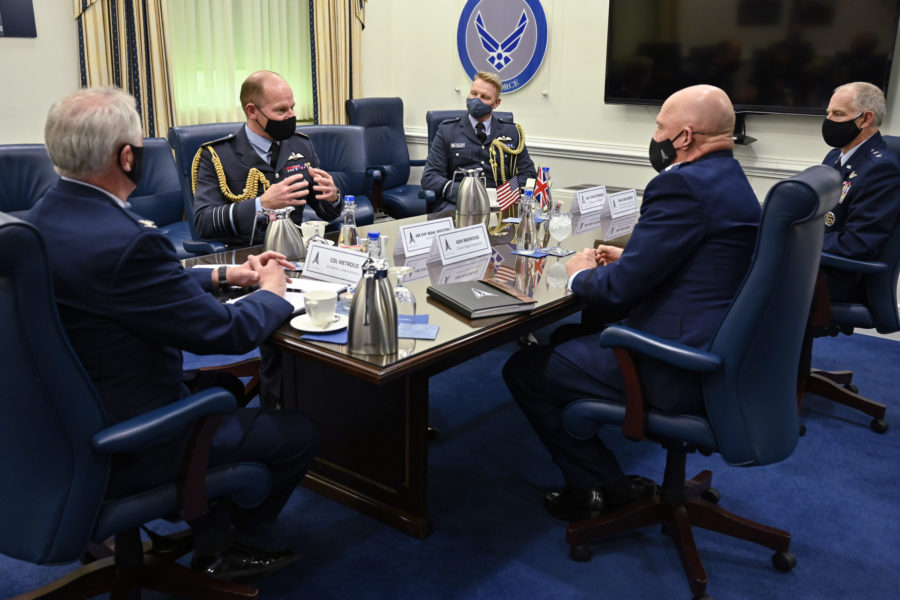The U.S. and six other countries have published a new “vision” to guide them in combining their military space activities, citing “the increasingly comprehensive and aggressive counter space programs of other nations” in a statement by the Defense Department.
Together with Australia, Canada, France, Germany, New Zealand, and the U.K., the U.S. published a three-page document titled “Combined Space Operations Vision 2031” on Feb. 22.
Identifying “Combined Space Operations” as an “initiative,” the document “outlines the initiative’s overarching purpose and highlights its guiding principles, including: freedom of use of space, responsible and sustainable use of space, partnering while recognizing sovereignty, and upholding international law,” according to the statement.
The Pentagon also cites “threats presented by technological advances” as another reason for the initiative.
Russia’s test of a ground-launched anti-satellite weapon in November 2021 demonstrated a risk to satellites—not just from the weapon itself but also the more than 1,500 pieces of debris added to low-Earth orbit and forming so-called “squalls” of conjunctions, or close approaches, with satellites.
Astronauts and cosmonauts on the International Space Station had to take cover inside their return capsules the day of the test, and some of the debris could still collide with the ISS.
DOD leaders have also characterized a Chinese satellite with a grappling robotic arm and a Russian satellite that harbors other satellites, along with cybersecurity, as posing risks.
Advantages of international cooperation include adding what Col. Raj Agrawal refers to as “passive spacepower capacity.” Head of the Space Division of the Department of the Air Force’s International Affairs office, Agrawal described “limited budgets” and “a situation where we maybe we can’t get after all the things we want to get after” during the Jan. 27 episode of The Aerospace Corp.’s “The Space Policy Show.”
“The more we work together to build out our capacity, the more we can deter anyone that tries to hold our advantage in space at risk,” Agrawal said.
He said the department wants to build an architecture of space assets, or “space order of battle, … that is interoperable with our … partners and also makes it so that any disruption of that space order of battle is a disruption to many nations, not just the U.S.”
The initiative will involve multiple “lines of effort” including:
- Resilient, interoperable architectures
- Enhanced command, control, communications and other “operational linkages” among parties
- To “foster” responsible behaviors
- To collaborate on strategic communications
- To share information
- Professional space cadres and training.
